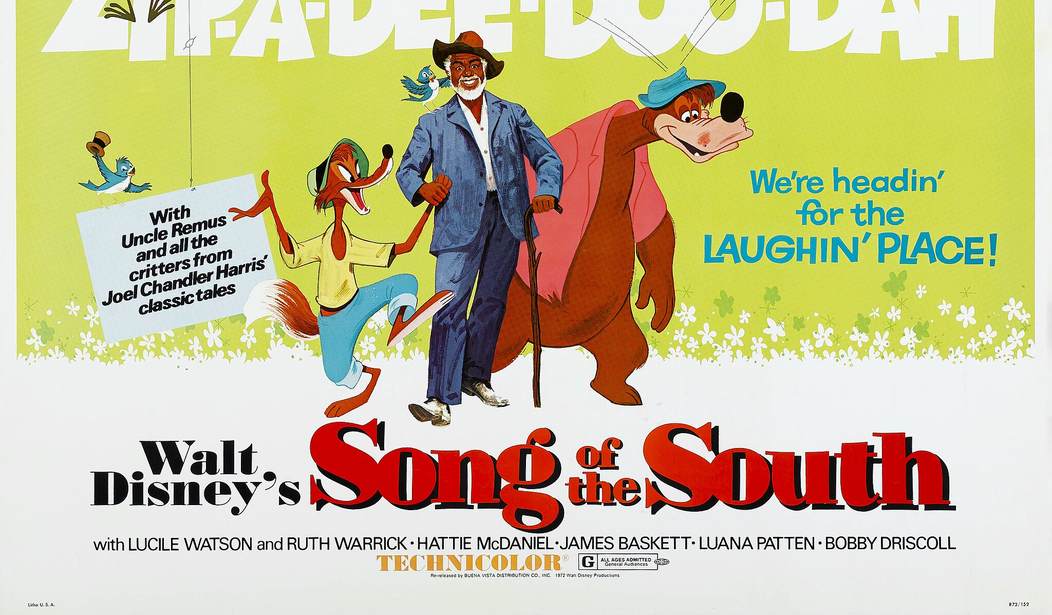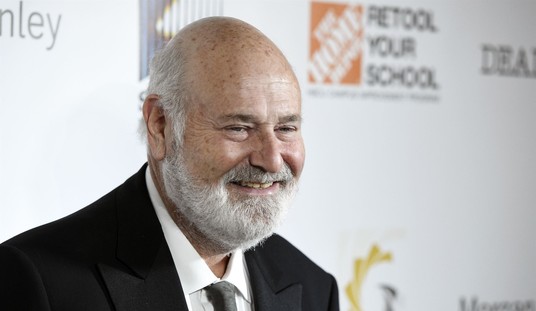This is Part II in an ongoing series exploring cultural changes by decade. See last week’s first installment here: 10 Disney Cartoons From the 1930s that Reflect the Can-Do Spirit that Survived the Great Depression.
Walt Disney’s phone rang on the afternoon of December 7, 1941. His studio manager was on the other end to let him know that the Army was taking over the sprawling campus of the studio. The nation was already in shock at the bombing of Pearl Harbor just hours earlier, and Disney would cohabit with the United States military for the duration of the war.
The federal government commissioned hundreds of projects big and small for Disney, ranging from insignia design to training films to propaganda pieces. World War II changed the way the Disney Studios made films — from their efforts to support the Allies to anthology cartoons made for quick turnaround to new techniques to get their own products into the market, Disney emerged from the war a different studio than when the Army marched in on December 7, 1941. Here are ten examples.
10. “The Thrifty Pig” (1941)
Even before the United States became involved in World War II in the aftermath of Pearl Harbor, Hollywood was willing to engage in helping “the war effort.” Our northern cousins in Canada commissioned a propaganda piece from Disney to sell war bonds.
“The Thrifty Pig” relied on the familiar footage from “Three Little Pigs” from nearly a decade before, with some noticeable changes: the Big Bad Wolf is now a Nazi, and the third pig constructs his house out of Canadian War Savings Certificates.
The aim of the cartoon, of course, was to encourage Canadians to “invest in victory” by buying the certificates. It was an early test of the effectiveness of Disney toward the efforts to defeat Germany and Japan – and it was a success.
9. “Private Pluto” (1943)
“Private Pluto” was the first short to feature a pair of chipmunks whom we’d later call Chip & Dale. In this short, Pluto’s commanding officer tells him that he believes there are saboteurs and charges him to guard a pill-box. He follows his marching orders like a good solder and later discovers that two chipmunks storing nuts in the pill-box are the saboteurs. The typical Pluto versus Chip & Dale wackiness ensues.
Of course, “Private Pluto” didn’t do terribly much for the war effort, but it did provide a lighthearted look at military life. Many soldiers were probably able to identify with Pluto in some way, and the short treats the Army with respect, even as it plays military duty for laughs.
8. “Fall Out Fall In” (1943)
Part of Disney’s patriotic war era output included a series of Donald Duck cartoons that placed him in the Army, going through the rigors of life on the front. In “Fall In Fall Out” Donald and his unit march for hours through a myriad of conditions. At first, Donald marches with enthusiasm, but his good attitude fades and the march wears on through worsening conditions. Once the men (and duck) have stopped marching, Donald attempts to fall asleep but has trouble until he completely passes out from exhaustion.
Obviously, “Fall In Fall Out” gave moviegoers on the homefront a comic glimpse into what our boys were going through “over there.” Certainly the soldiers could identify and laugh along with the short as well. If only the battles American soldiers fought could have been as comical.
7. “The New Spirit” (1942)
The federal government knew what Mary Poppins would teach us two decades later: that a spoonful of sugar helps the medicine go down. That’s part of the reason why the United States contracted for educational and propaganda films from Disney during the war.
One film in particular, 1942’s “The New Spirit,” explained to the public the importance of paying income taxes. Due to the war effort, new legislation opened up the income tax to millions of citizens who had never had to pay. The narrator explains to a patriotic Donald Duck that a new spirit of patriotism means that Americans should pitch in to help with the war effort. One way was through paying taxes on time.
The cartoon shows where Americans’ tax dollars went to pay to help fight against tyranny. Donald is convinced, and fills out his tax form right then and there. The feds knew that many Americans could understand their civic duty better if Disney delivered the message. (If only our government would do two things today that it did in this cartoon: fight tyranny and explain where our tax dollars go…)
6. Saludos Amigos (1943)
In the late spring and summer of 1941, Walt Disney and several of his artists and many of their spouses embarked on a goodwill tour of South America, sponsored by the United States government. The aim of the trip was to promote friendship between the U.S. and its neighbors to the south. Coming on the heels of the animators’ strike that frustrated the studio, Walt welcomed the trip.
Two feature films stemmed from the trip. The first was Saludos Amigos, a 42-minute movie combining four animated segments with live action highlights of the trip. Two segments featured Donald Duck – one in which he visits the Andes, and another in which Donald experiences the music and sights of Brazil and learns the Samba from his friend, the parrot Jose Carioca. In another part, Goofy transforms into an Argentinian gaucho.
The connection to World War II? Disney was able to make this feature on the cheap, a necessity during the financial strain of the war years. The success of Saludos Amigos encouraged the studio to make another Latin American feature a couple of years later.
5. The Three Caballeros (1945)
The second of the films culled from the Latin America trips also costarred Donald Duck. The premise of The Three Caballeros has Jose Carioca from Saludos Amigos and Mexican rooster Panchito giving Donald presents for his birthday. One of the gifts is a film projector, and the trio watch films that tell Latin American stories. The film includes several musical and dance numbers featuring stars from Latin America.
The feature combines beautiful artwork from several Disney artists, including Mary Blair. In the ‘60s and ‘70s, with the advent of psychedelia, many of the movie’s sequences became popular in countercultural circles.
In one sequence, Donald and Jose travel to Brazil and dance with Aurora Miranda, sister of Carmen Miranda. This marked the first time since the Alice comedies in the ‘20s that Disney combined animation and live action – the success of that sequence led Walt to expand it even further mere months later. Once again, the studio make this feature quickly and for a fraction of a single-story full-length feature. Both Latin American movies paved the way for the other “package” films of the ’40s – Fun And Fancy Free, Make Mine Music, and The Adventures Of Ichabod And Mr. Toad.
4. Song Of The South (1946)
Once World War II began to wind down, Disney desperately wanted to get back into the feature film market. For years, Walt had wanted to release a version of Joel Chandler Harris’ classic Uncle Remus stories, and he knew that a live-action movie would involve a far shorter production time.
Two factors made Song Of The South more than a mere live-action film. First, many people at the studio thought that the public would expect at least some animation from a Disney project, and Walt knew that the only way to tell the stories of Bre’r Rabbit and his friends would be through the use of animated anthropomorphic characters.
The filmmakers – with help from Walt himself – managed to blend the animated and live-action scenes flawlessly and seamlessly, and they even inserted actor James Baskett into a complete animated landscape! Song Of The South won two Oscars – Best Song and a special award for Baskett.
Unfortunately, this charming hit film has courted controversy over the decades because of its portrayal of Reconstruction Era Georgia. That’s a shame, because if Disney handled a Blu Ray release the right way, Song Of The South could become a beloved classic all over again.
3. “Der Fuehrer’s Face” (1943)
Today it seems odd to think that studios could play Nazism for laughs, but in the heat of World War II, Allied propaganda pieces made comic relief out of the enemy. Case in point: the 1943 Oscar-winning Donald Duck short “Der Fuehrer’s Face.”
In this cartoon, Donald dreams he is living in Nazi Germany, heiling Hitler, working in a factory, and enduring the indignity of living under Nazi control. When his job at an ammunition factory spins out of control, Donald wakes up thrilled to be an American citizen, living in the land of the free. The silly title song became a hit record.
“Der Fuehrer’s Face” served to remind Americans – in its own wacky, un-PC way – of how terrible Nazi Germany truly was. Sometimes comedy can make a point as well as drama.
2. “Education For Death” (1943)
Rarely is a cartoon so sobering as “Education For Death.” This 1943 short, directed by Clyde Geronimi, doesn’t aim for laughs – at least not often. Instead, “Education For Death” is propaganda through and through, and it is strikingly effective.
Art Smith narrates the story of a boy named Hans and how Germany indoctrinates him into Nazism. From Hans’ birth the state ingrains the harmful nationalism, statism, and abject hatred of Hitler’s Germany into the boy until he becomes a fanatical, brainwashed Nazi soldier and marches to his death.
With largely untranslated German dialogue from its characters – including actual audio of Adolf Hitler – the short relies on powerful imagery and Smith’s dramatic narration to carry the story forward. It’s a harrowing cartoon, especially when we view it through the eyes of history.
1. Victory Through Air Power (1943)
Would you believe me if I told you that a Disney movie helped turn the tide of World War II? It sounds crazy, but it’s true. Walt had read the book Victory Through Air Power by Alexander P. de Seversky, a Russian Army major and aviation pioneer who defected to the United States in 1918. Walt believed in Seversky’s ideas so much that he decided to make a film detailing them.
The resulting feature, also entitled Victory Through Air Power, with the two-pronged goal of convincing Allied leaders of the veracity of Seversky’s tactics and of building morale on the homefront. The film includes a brief history of aviation and instruction from Seversky accompanied by animated enactments of the techniques. The studio sent a print to the Quebec Conference at the request of Winston Churchill, and the film convinced Franklin Delano Roosevelt to commit with Churchill to long range bombing techniques, which helped the Allies to win the war.










Join the conversation as a VIP Member